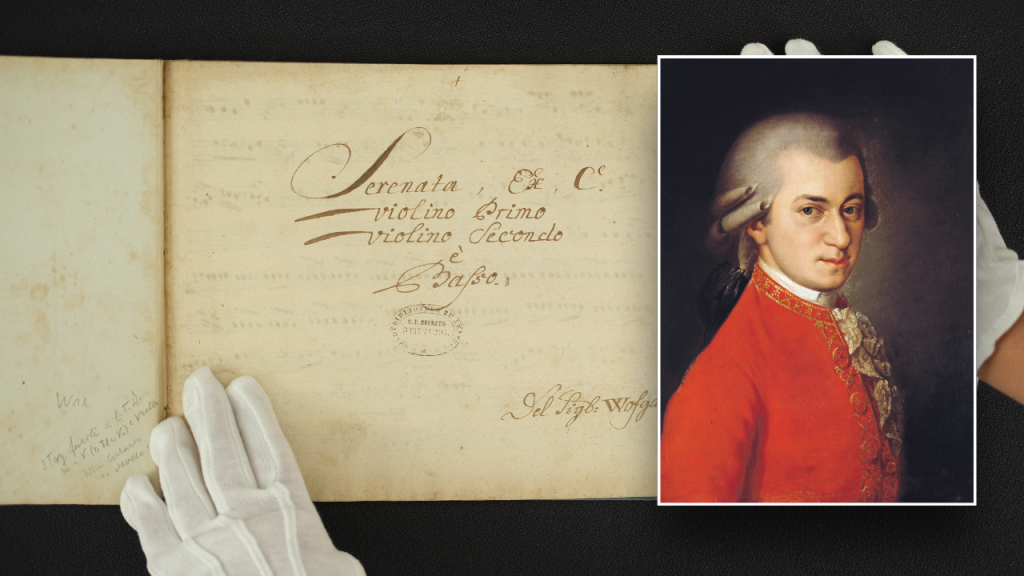German researchers recently discovered a “new” piece by Wolfgang Amadeus Mozart, titled “Serenade in C,” 233 years after his death. The composition was found in the Leipzig Municipal Libraries and dates back to around 1780 when Mozart was 24 years old. The discovery was made by researchers working on a new edition of the Köchel catalog, which is a catalog of Mozart’s compositions. The piece will be published in the newest catalog under the name “Ganz kleine Nachtmusik,” which translates to “Quite Little Night Music,” in reference to Mozart’s famous piece “Eine kleine Nachtmusik.”
The newly-identified composition consists of seven miniature sets for string trio, lasting only about twelve minutes. It is believed that Mozart wrote the piece as a teenager in the 1760s, although the manuscript that was found is a copy made over a decade later. The manuscript, which does not come from Mozart himself, was discovered to be written in dark brown ink on medium white handmade paper. The library believes that the piece was not signed and was likely created by Mozart when he was a teenager.
The composition was performed at the Leipzig Opera by two violinists and a cello player, marking its first public performance in centuries. Ulrich Leisinger, the head of research at the International Mozarteum Foundation, emphasized the significance of the piece in shedding light on Mozart’s early chamber works that have been lost to history. Leisinger speculated that the manuscript may have been preserved by Mozart’s sister as a memento of her brother, suggesting that he may have written the trio specifically for her name day.
The discovery of this “new” Mozart piece adds to the understanding of the composer’s work and sheds light on his early chamber compositions, which were previously unknown. The composition, now named “Ganz kleine Nachtmusik,” offers insight into Mozart’s teenage years and his development as a musician. The piece’s performance at the Leipzig Opera marks its public debut after being hidden in the library for an unspecified period of time. Researchers and experts are excited about the find and its potential implications for understanding Mozart’s early years and musical output.


